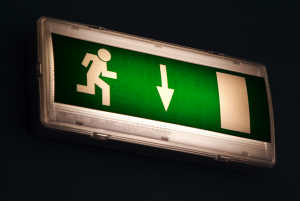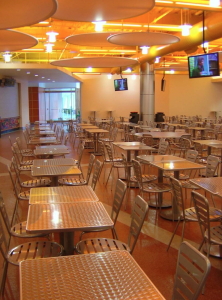Eyes are one of the most expressive parts of the face. They carry emotion, memory, and identity. Lately, more people are exploring creative ways to shift their look through colour contact lenses, adding subtle or striking changes to how they’re seen. Some go even further, using red eye contacts to make a bold impression or complete a themed look.
Changing your eye colour isn’t just about style—it’s a quiet decision that can shape how you feel. Unlike a haircut or new clothes, it’s temporary and personal. You can shift the tone of your appearance without making a permanent change, which gives it a special kind of freedom.
Wearing a new eye colour can feel like stepping into another version of yourself. Maybe it’s a softer tone to match a calm mood or a deeper shade that sharpens your look. This change might be small to others, but to the person wearing it, it often feels like a reset.

There’s also something grounding about having that control. Choosing how you present your eyes can help you feel more in tune with your mood or identity on any given day. It can lift your confidence without needing to say anything at all.
Some people wear them to mark a special event or dress up for a photo shoot. Others just like the way it makes them feel on an ordinary day. That’s the beauty of it—it doesn’t need a reason. It’s a form of expression that exists on your terms.
Just like how you pick an outfit based on how you feel, your eye colour can reflect your mood. A soft grey might bring a calm tone to your look. A golden shade might warm it up. These decisions can quietly shift how people respond to you—or how you respond to yourself.
We notice people’s eyes more than we realise. A slight colour change often sparks curiosity. It might not be obvious what’s different, but the energy feels new. It draws attention in a way that’s both subtle and captivating.
This is part of why artists and performers have long used colour in the eyes. But it’s not just for the stage or screen. Every day, people are now using this same idea to explore parts of themselves. It’s not about becoming someone else—it’s about bringing more of yourself forward.
Something is refreshing about being able to shift how you look without pressure. It gives you room to explore without needing to commit. You can change your eye colour on a weekday, then return to your natural shade the next. That kind of flexibility can feel freeing.
In many ways, it mirrors how we move through life. We aren’t just one version of ourselves. We evolve. We try new things. We let go of old habits. And something as simple as changing your eyes can become part of that process.
The experience itself can feel like a small ritual—taking a moment to check in with how you feel and choosing to reflect that outwardly. That’s part of what makes it special. It’s not loud or showy. It’s quiet, thoughtful, and often just for you.
The eyes hold a lot of power. They connect us to ourselves. When you shift their colour, it can feel like adjusting the mood of a conversation without speaking. It’s a soft signal. A gentle transformation. Something that says, “This is how I feel today.”
More than anything, it’s about choice. The ability to shift, to experiment, to express something different without changing who you are. In a fast world filled with noise, these small personal changes can bring clarity and a stronger sense of self.
And that sense of self can ripple into the rest of your day. When you feel aligned with how you look, even in something as small as your eye colour, it sets a tone. You may stand a little taller. You might speak with more ease. It’s not about impressing others—it’s about feeling right within yourself. That internal shift, no matter how minor it seems, can make all the difference. It reminds you that you’re allowed to explore, to play, and to reclaim how you show up in the world—starting with your eyes.
That’s the quiet beauty of personal expression. It doesn’t need validation. It doesn’t demand explanation. Something as small as changing your eye colour can feel like a private signal to yourself that you’re ready for something new—or simply embracing who you are today. There’s strength in that. A small shift on the outside often reflects something deeper taking place within.
And as we grow more comfortable with the idea of self-expression in all its forms, we make room for new conversations about identity, self-awareness, and self-acceptance. Eye colour becomes one more layer in how we choose to tell our story—softly, honestly, and on our own terms.








 Additionally, guests who purchase packages are not as likely to cancel their trips. It is possible to create packages that connect into popular styles and update them frequently to market repeat visitation. As an instance, you may include moves to a nearby museum with a unique exhibit such as Hobart hotel packages promoting visits to the Museum of Old and New Art (MONA). Creative hotel deals are also a tool to market your special attributes, like your award-winning restaurant or your own pet-friendly rooms.
Additionally, guests who purchase packages are not as likely to cancel their trips. It is possible to create packages that connect into popular styles and update them frequently to market repeat visitation. As an instance, you may include moves to a nearby museum with a unique exhibit such as Hobart hotel packages promoting visits to the Museum of Old and New Art (MONA). Creative hotel deals are also a tool to market your special attributes, like your award-winning restaurant or your own pet-friendly rooms. For the entrepreneur wondering just how to conduct a property company, there are lots of basic requirements for auction and online property sales that have to be addressed before soliciting listings and customers.
For the entrepreneur wondering just how to conduct a property company, there are lots of basic requirements for auction and online property sales that have to be addressed before soliciting listings and customers.

 while traveling. There are various ways to become profitable in social media, blogging, affiliate marketing, and online stores. Because of these new opportunities, many individuals are transitioning to become location-independent – thus, the term “digital nomads”. This “trend” is not only for the newcomers. Even established businesses are making the switch and have fully embraced the idea of becoming more mobile.
while traveling. There are various ways to become profitable in social media, blogging, affiliate marketing, and online stores. Because of these new opportunities, many individuals are transitioning to become location-independent – thus, the term “digital nomads”. This “trend” is not only for the newcomers. Even established businesses are making the switch and have fully embraced the idea of becoming more mobile.










 a large crypto wallet
a large crypto wallet Print is still a highly effective channel of communication for businesses
Print is still a highly effective channel of communication for businesses who wish to communicate with their prospects and clients, particularly when coupled with digital. According to Adam Dost, VP of Strategy and Marketing in Printek, an integrated strategy will radically expand your capabilities to convey messages to audiences. Integrating print and technology enhances targeting, enhances personalization, and increases conversions. Together, digital and print advertising permit you to reach your customers personally and with a relevant message across each channel. The options are endless.
who wish to communicate with their prospects and clients, particularly when coupled with digital. According to Adam Dost, VP of Strategy and Marketing in Printek, an integrated strategy will radically expand your capabilities to convey messages to audiences. Integrating print and technology enhances targeting, enhances personalization, and increases conversions. Together, digital and print advertising permit you to reach your customers personally and with a relevant message across each channel. The options are endless.
 blogs and posts, which are posted on your site, social media and relevant community blog websites. The search engine optimization professional will research the best keywords for your content author to use. In case you have an existing web developer, SEO will have the keywords incorporated in descriptors; meta and title tags to boost the visibility of your site.
blogs and posts, which are posted on your site, social media and relevant community blog websites. The search engine optimization professional will research the best keywords for your content author to use. In case you have an existing web developer, SEO will have the keywords incorporated in descriptors; meta and title tags to boost the visibility of your site. their companies. You need to attend important events — and might need to attend more than one to meet the ideal mentor, to network or to gain support for your business. If you discover someone you get on with and respect, never hesitate to ask them questions about who they are, and how you both may be able to help each other out within the networking field. To do this right, you have to know what networking really is: media is a connection. You can’t consider it in any conventional sense, you cannot box networking; you cannot explain it away using jargon. Networking with, and mentoring as small business advisors in its broadest sense is extremely easy, effective, and is about helping and supporting people.
their companies. You need to attend important events — and might need to attend more than one to meet the ideal mentor, to network or to gain support for your business. If you discover someone you get on with and respect, never hesitate to ask them questions about who they are, and how you both may be able to help each other out within the networking field. To do this right, you have to know what networking really is: media is a connection. You can’t consider it in any conventional sense, you cannot box networking; you cannot explain it away using jargon. Networking with, and mentoring as small business advisors in its broadest sense is extremely easy, effective, and is about helping and supporting people.
 When workers respect and trust their employer, they’re happier, participating more and work harder. When they don’t – which is much too common – they could be seeking to jump ship. So where does this leave management?
When workers respect and trust their employer, they’re happier, participating more and work harder. When they don’t – which is much too common – they could be seeking to jump ship. So where does this leave management? We all do it from time to time no matter how moral or upright we think we are. Let’s face it. It feels damn good when we do it. There is just something about dropping the “F bomb” that releases a lot of tension and pent up emotions. In fact, i just did it as I’m sitting at the keyboard writing this: just spilled coffee all over the desk because my cat jumped up and scared the s*&@# out of me. Damn that felt good…I swear!
We all do it from time to time no matter how moral or upright we think we are. Let’s face it. It feels damn good when we do it. There is just something about dropping the “F bomb” that releases a lot of tension and pent up emotions. In fact, i just did it as I’m sitting at the keyboard writing this: just spilled coffee all over the desk because my cat jumped up and scared the s*&@# out of me. Damn that felt good…I swear! A co-worker gets fired.this can happen to anyone at any time. As a manager though, a lot of the times it is not in your control who gets fired or not. Sometimes it could be a co-manager or a manager of another department who gets the bad news. The last thing you should do is to say or do nothing at all.
A co-worker gets fired.this can happen to anyone at any time. As a manager though, a lot of the times it is not in your control who gets fired or not. Sometimes it could be a co-manager or a manager of another department who gets the bad news. The last thing you should do is to say or do nothing at all. Being patient with new staff is easy to say but hard to do. Managers often have to recruit new staff members and train them in whatever your company does. There are procedures and there are systems in place that a new staff member has to learn. And how quickly a new staff member learns often depends on how well you train them. Being patient with new staff members is important for their development and possibly their future within the company. How can that work?
Being patient with new staff is easy to say but hard to do. Managers often have to recruit new staff members and train them in whatever your company does. There are procedures and there are systems in place that a new staff member has to learn. And how quickly a new staff member learns often depends on how well you train them. Being patient with new staff members is important for their development and possibly their future within the company. How can that work? Socrates once said
Socrates once said Your services or products must fix one severe pain point that individuals deal with. Find the one idea that sticks, test, improve and regularly feed information back into your feedback loop to build a much better service or product. To learn how to do this,
Your services or products must fix one severe pain point that individuals deal with. Find the one idea that sticks, test, improve and regularly feed information back into your feedback loop to build a much better service or product. To learn how to do this, 
 A while back, I came across a really motivating article about what can motivate people more. I have sat through a number of business courses for managers and business owners and found that the ones that motivated me the most were the ones that were a little different and sometimes even humorous.
A while back, I came across a really motivating article about what can motivate people more. I have sat through a number of business courses for managers and business owners and found that the ones that motivated me the most were the ones that were a little different and sometimes even humorous.

 Gaining momentum in your executive career in sales needs a proactive and disciplined technique,
Gaining momentum in your executive career in sales needs a proactive and disciplined technique,  The crucial actions taken in the initial few minutes of an emergency are extremely important. A prompt caution to staff members to lock-down, shelter or leave can save lives. A call for help to public emergency services that offer full and precise info will help the dispatcher to send the ideal responders and materials. An employee trained to administer first aid or perform CPR can be lifesaving. Action by workers with an understanding of structure and procedure systems and knowledge of the facilities nearest emergency exit doors lit up by emergency lighting, can help manage a leak and lessen damage to the facility and the environment.
The crucial actions taken in the initial few minutes of an emergency are extremely important. A prompt caution to staff members to lock-down, shelter or leave can save lives. A call for help to public emergency services that offer full and precise info will help the dispatcher to send the ideal responders and materials. An employee trained to administer first aid or perform CPR can be lifesaving. Action by workers with an understanding of structure and procedure systems and knowledge of the facilities nearest emergency exit doors lit up by emergency lighting, can help manage a leak and lessen damage to the facility and the environment. One of the fastest growing businesses in
One of the fastest growing businesses in  Insurers of fine art hear lots of reasons and excuses in their kind of work. Practically as many as third-grade instructors.
Insurers of fine art hear lots of reasons and excuses in their kind of work. Practically as many as third-grade instructors. Not so long ago, a friend of mine asked how he can motivate himself to keep his new career fresh and interesting. He went to great lengths to finally get his diploma in film and animation. Even though the CG field is very competitive, the idea of motivation is the same no matter what industry you want to get into.
Not so long ago, a friend of mine asked how he can motivate himself to keep his new career fresh and interesting. He went to great lengths to finally get his diploma in film and animation. Even though the CG field is very competitive, the idea of motivation is the same no matter what industry you want to get into. A friend asked me the other day ‘I want to start my own beauty salon. Should I take a beauty therapy course or should I just dive right in and hope for the best”? Well, the answer is very simple. NO! Never ever just dive into a business and hope for the best and YES, take a course in some discipline if you don’t know what you are doing. These courses usually have a section on how to run and set up your new business. No matter what type of business you want to start, the basics of business should always be adhered to.
A friend asked me the other day ‘I want to start my own beauty salon. Should I take a beauty therapy course or should I just dive right in and hope for the best”? Well, the answer is very simple. NO! Never ever just dive into a business and hope for the best and YES, take a course in some discipline if you don’t know what you are doing. These courses usually have a section on how to run and set up your new business. No matter what type of business you want to start, the basics of business should always be adhered to. Unless you are lucky enough to get your own office, chances are you will have your own workstation or cubicle to do your work in. Having proper office cubicle etiquette is important if this is how your office is set out. There are a few things you probably should keep in mind when working in such close quarters with everyone else.
Unless you are lucky enough to get your own office, chances are you will have your own workstation or cubicle to do your work in. Having proper office cubicle etiquette is important if this is how your office is set out. There are a few things you probably should keep in mind when working in such close quarters with everyone else. Brainstorming sessions are one of the best ways to create new innovations in your company or division. Entrepreneurs who have taken many diploma of business courses have regular brainstorming sessions among their start-up partners. It has been used by a countless number of people over the years because it allows a broad listing of issues or problems that might require analysis and it can help to identify specific causes for specific problems. After all,
Brainstorming sessions are one of the best ways to create new innovations in your company or division. Entrepreneurs who have taken many diploma of business courses have regular brainstorming sessions among their start-up partners. It has been used by a countless number of people over the years because it allows a broad listing of issues or problems that might require analysis and it can help to identify specific causes for specific problems. After all,  Have you ever spoken to angry callers on the phone and felt like just hanging up on them? I know I have, many times. However, that’s the worst thing you can do.
Have you ever spoken to angry callers on the phone and felt like just hanging up on them? I know I have, many times. However, that’s the worst thing you can do.

 More than ever before, as a manager, you will be asked to make some very tough decisions. Making decisions in management is part of the everyday routine. However, managers complain that there never seems to be enough time to make a thoughtful decision. In the world that we live in, everybody wants an answer yesterday. With the lack of time to make a decision, people in management need to understand the process which underlies every decision that needs to be made. You need the right skills to understand the underlying issues associated with each decision and if you have those, then making the right decision will be easy.
More than ever before, as a manager, you will be asked to make some very tough decisions. Making decisions in management is part of the everyday routine. However, managers complain that there never seems to be enough time to make a thoughtful decision. In the world that we live in, everybody wants an answer yesterday. With the lack of time to make a decision, people in management need to understand the process which underlies every decision that needs to be made. You need the right skills to understand the underlying issues associated with each decision and if you have those, then making the right decision will be easy. One on my favorite places to work was a company that boasted
One on my favorite places to work was a company that boasted 
 The definition of a team is a group of people working together in a supportive manner and to compliment each others efforts to gain optimum results.
The definition of a team is a group of people working together in a supportive manner and to compliment each others efforts to gain optimum results.